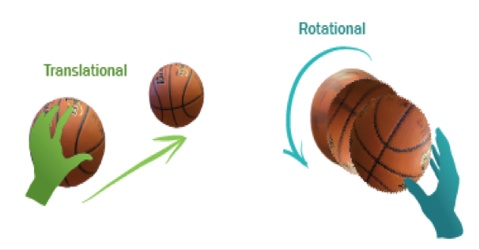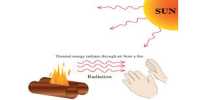Translational kinetic energy
Motion of a body can be translational and rotational or complex motion consisting of translational-rotational. So, kinetic energy of a body can be either translational kinetic energy or rotational kinetic energy or both. The translational kinetic energy depends on motion through space, and for a rigid body of constant mass is equal to the product of half the mass times the square of the speed. Motion of a freely falling body is a translational kinetic energy. Kinetic rangy at a rotating fan is rotational kinetic energy. In the motion of a wheel or a football theta are both translational and rotational kinetic energy.
Examples:
When a stone is kept touching a glass nothing happens, but when the stone is thrown on the glass, it breaks. The stone gets this ability due to motion.
(2) When a hammer strikes a nail strongly on a wall, the nail penetrates the wall. Due to the motion of the hammer at can do this work. That means, due to kinetic energy of the hammer it can overcome the resistance of the wall.
(3) Currents in the river become very strong while coming down from a hill on the plane. As the kinetic energy of the current is very strong so large stones are dragged through the currents.














